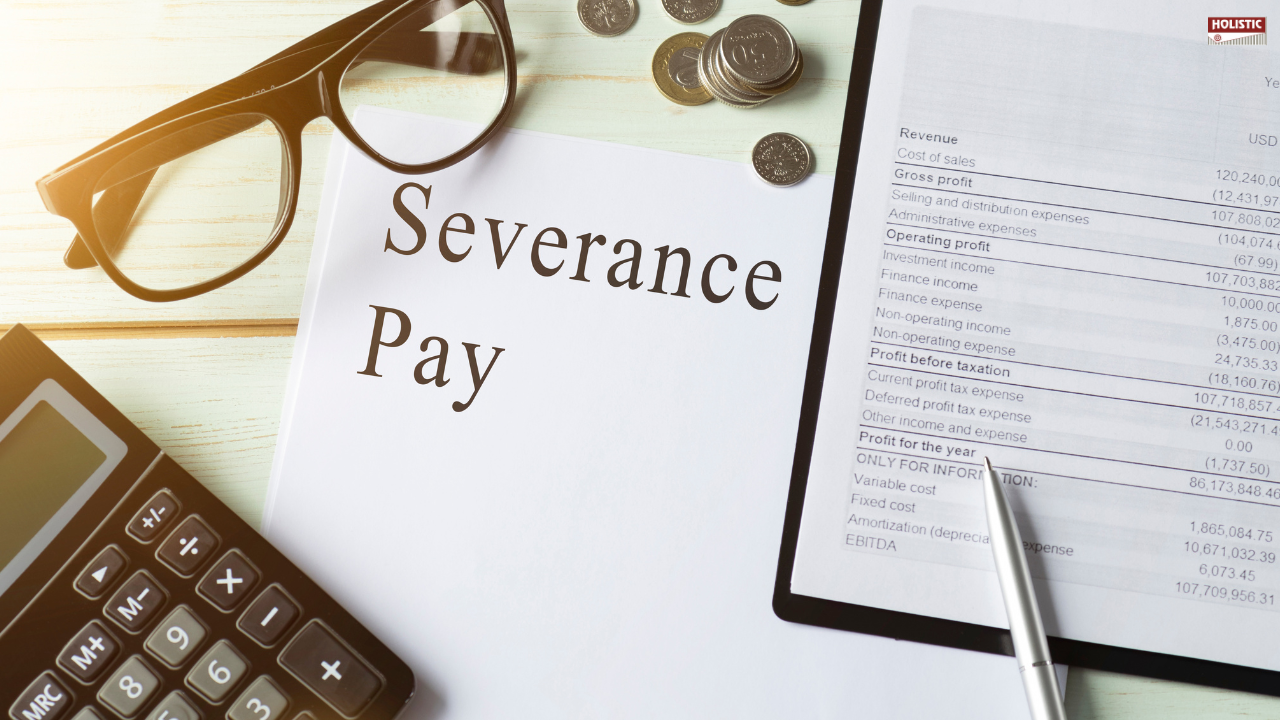You’ve just been called into a meeting.
The HR says, “We’re restructuring… but don’t worry, there’s a severance package.”
Now pause for a second—what exactly is that?
Is it a golden handshake… or just a polite way of saying goodbye?
Will you really take home the amount you’re promised—or will taxes take a big bite?
In today’s ever-changing job landscape, understanding severance pay in India isn’t just for those facing layoffs—it’s essential knowledge for every employee.
Table of Contents:
- What is Severance Pay?
- When is Severance Pay Applicable?
- How is Severance Pay Calculated in India?
- Severance Pay Rules for Workmen and Non-Workmen
- Severance Pay Taxation: How Much Do You Really Get?
- Real-World Examples of Severance Packages in India
- Final Thoughts: Plan Smart Before You Sign Off
What is Severance Pay?
Imagine you’ve dedicated years to a company—only to find your role made redundant overnight.
That’s where severance pay comes in.
It’s a financial cushion offered by the employer to help you navigate that uncertain transition between jobs.
But don’t mistake it for a bonus—it’s not a gift. It’s a contractual or legal right, given to soften the financial shock of sudden unemployment.
When is Severance Pay Applicable?
You might wonder— “Will I qualify if I’m asked to resign? What if my company shuts down?”
Severance pay is typically applicable when:
- The company restructures or shuts down operations.
- Your role becomes redundant due to automation or cost-cutting.
- You’re asked to leave on mutual terms.
However, if you voluntarily resign, severance doesn’t usually apply—unless your employment agreement says otherwise.
So before signing that letter, always ask: Am I eligible for severance?
How is Severance Pay Calculated in India?
Here’s the big question everyone asks: “How much will I get?”
Your severance amount depends on three main factors:
- Your years of continuous service,
- Average pay drawn, and
- Your company’s internal policy.
As per the Industrial Disputes Act, eligible employees receive 15 days’ average pay for every completed year of service (or part exceeding six months).
But in reality?
Many companies go beyond this—offering a month’s salary for each year of service or a lump-sum package based on tenure and seniority.
Severance Pay Rules for Workmen and Non-Workmen
For Workmen (Industrial Disputes Act, 1947)
If your role involves technical, clerical, or operational work (earning below ₹10,000/month in supervisory roles), you’re covered by law.
You’re entitled to:
- 15 days’ average pay per year of service,
- Notice pay, and
- Other statutory dues like gratuity and leave encashment.
For Non-Workmen
If you’re in a managerial or executive role, your severance depends on your employment contract—not law.
Some companies offer 30 days’ pay per year of service, while others set caps based on years left to retirement.
The takeaway? Always read your contract carefully—that fine print could decide your financial future.
Severance Pay Taxation: How Much Do You Really Get?
Think that ₹20 lakh severance pay-out will land straight into your account?
Not quite.
Under Section 17(3) of the Income Tax Act, 1961, severance pay is treated as “profits in lieu of salary.”
Translation? It’s taxed like your regular income.
That means your severance is added to your total annual income and taxed based on your slab rate.
Unless you qualify for specific exemptions—your in-hand pay out may shrink significantly after tax.
So before celebrating that big cheque, calculate your post-tax amount—it might save you from future surprises.
Real-World Examples of Severance Packages in India
Companies across India have taken different approaches to severance. For instance:
- Tata Consultancy Services (TCS): Offered tiered severance packages for long-tenured employees.
- Amazon India (2023): Provided five months’ pay and career transition support during layoffs.
- Ford India (2022): Offered between ₹33 lakhs to ₹85 lakhs per employee after plant closure.
- Accenture India (2020): Gave seven months’ pay, including notice and voluntary exit benefits.
Clearly, severance isn’t a one-size-fits-all deal—it depends on company policy, industry trends, and negotiation.
Final Thoughts: Plan Smart Before You Sign Off
Losing a job can shake your confidence—but your severance pay can also be your Launchpad to financial stability, if handled wisely.
Should you clear loans? Invest it? Or keep it for emergencies?
This is where professional guidance matters.
A Certified Financial Planner (CFP) can help you structure your pay-out strategically—so that it supports your long-term goals, not just short-term relief.
Because in the end, severance isn’t just the end of employment—it’s the start of a new financial chapter.






Leave a Reply